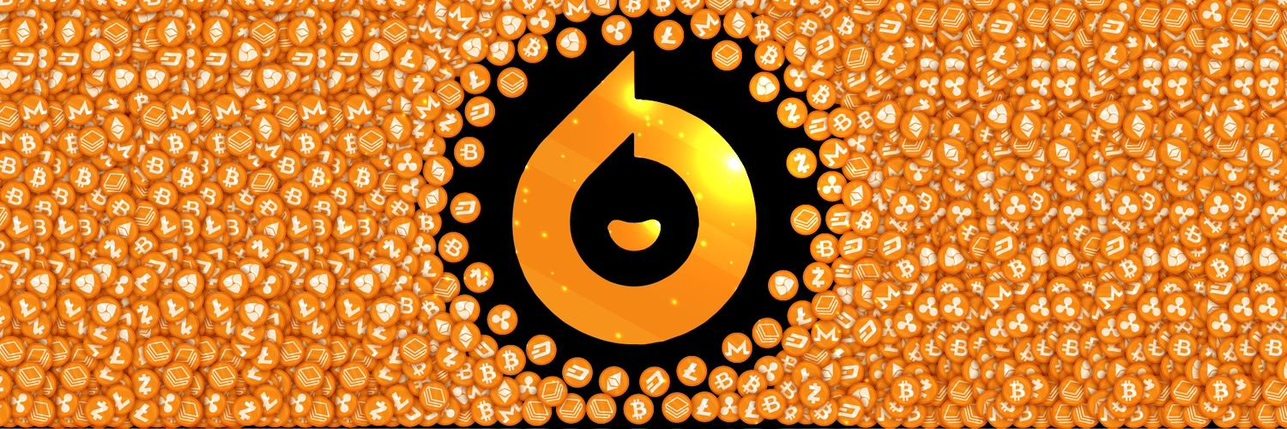


Oasis 價格ROSE
您今天對 Oasis 感覺如何?
Oasis (ROSE) 簡介
什麼是 Oasis Network 呢?
Oasis Network 是一個支援隱私的 Layer 1 區塊鏈平台,致力於透過私密的智能合約,把對於數據的控制權和所有權還給用戶。這些智能合約即使在處理過程之中,也可以維護數據的隱私,進而培養出一個負責任的數據經濟。此網路類似於以太坊、比特幣等知名平台,但以其加強的交易速度而脫穎而出,每秒能夠處理約 1,000 筆交易。這一個功能使其成為以太坊的強大替代品,特別是它還專注於低成本交易。
在個人的數據成為搶手商品的數位時代,Oasis Network 想要重新塑造數據經濟。它設想出了一個去中心化的數據市場,用戶們可以在不損害隱私的情況之下,自主地控制、質押、貨幣化他們的數據。這種方法不僅可以保護用戶的數據,還可以從與企業共享數據的方法中,開闢新的獲利途徑。
資源
白皮書:https://docsend.com/view/aq86q2pckrut2yvq
官方網站:https://oasispro tocol.org/
Oasis Network 是如何運作的呢?
Oasis Network 的核心功能是其獨特的雙層架構:共識層和 ParaTime 層。共識層是由可擴展的委託權益證明(DPOS)共識演算法所提供支援的,並由一組分散的驗證器進行管理。此層負責維護網路的安全性和完整性。另一方面,ParaTime 層管理著多個並行的執行階段(ParaTimes),每個執行階段都代表著一個擁有共享狀態的複製的計算環境,不僅加強了網路的可擴展性,而且還支援密集計算。
這種分離有利於處理同時發生的交易,確保一個 ParaTime 中的複雜工作量不會影響到其他 ParaTime 的性能。此外,此網路還利用了代幣化的數據,讓用戶和開發人員可以以高度的完整性記錄策略,同時透過私密計算,以確保數據的隱私。這一個功能吸引了多個知名項目來利用 Oasis 的代幣化數據,包含了幣安、Chainlink 等。
什麼是 GNO 代幣呢?
ROSE 代幣是 Oasis 網路的原生功能型代幣,在生態系中扮演著重要角色。它的代幣供應量上限為 100 億枚,具有多種用途,包含交易費、質押、共識層的委託等。它還提供了質押獎勵,以鼓勵用戶保護網路。
Oasis Network 對於金融的影響
Oasis Network 是金融領域的創新燈塔,尤其是在新興的 DeFi 產業。其隱私優先的設計,讓開發人員可以建立和傳統金融網路整合的金融應用程式,進而將 DeFi 功能帶給更多人。此外,其數據控制方法還顛覆了傳統的業務模式,使用戶能夠從 Web 3.0 體驗中獲得更多收益。
是什麼決定了 Oasis Network 的價格呢?
Oasis Network(ROSE)價值是加密貨幣領域的熱門話題,愛好者們在 Oasis Network(ROSE)的 Reddit 和 ROSE 幣的 Twitter 等平台上熱烈地討論 ROSE 代幣的預測。ROSE 代幣的價格受到其創新技術和強大社群支持的影響,這反映在其不斷增長的市值上。投資者會密切關注 ROSE 加密貨幣新聞和 Oasis Network 代幣的更新資訊,以做出明智的投資決策。
ROSE 代幣的價格歷史紀錄,顯示出其受到更廣大的加密貨幣市場走向,以及其發展里程碑影響的趨勢。正如 ROSE 幣的圖表所示,在其價格動態中,策略夥伴關係和合作扮演了重要角色。隨著網路開始專注於推出新的智能合約和 DeFi 應用程式,ROSE 代幣交易量預計將會激增,使其成為 ROSE 幣預測討論的焦點。
結論
總之,Oasis Network 憑藉其在數據隱私和去中心化金融方面的創新方法,正站在區塊鏈和加密貨幣產業新時代的風口浪尖。其創新架構和有潛力的 ROSE 代幣,都是一個指向更安全、更高效率、更以用戶為中心的數位經濟的明燈。隨著 Oasis Network 不斷發展合作關係,並擴展其生態系,它無疑是一個值得關注的項目,它有可能會重新定義數據所有權的典範,以及數位產業中的金融交易。
Oasis 的 AI 分析報告
今日Oasis即時價格TWD
Oasis價格歷史(TWD)
 最低價
最低價 最高價
最高價 
Oasis的最高價格是多少?
Oasis的最低價格是多少?
Oasis價格預測
什麼時候是購買 ROSE 的好時機? 我現在應該買入還是賣出 ROSE?
ROSE 在 2026 的價格是多少?
ROSE 在 2031 的價格是多少?
常見問題
哪些因素影響Oasis(ROSE)幣的價格?
我如何預測Oasis(ROSE)幣的未來價格?
Oasis(ROSE)幣在2024年是一個好的投資嗎?
我可以在哪裡購買Oasis(ROSE)幣?
Oasis(ROSE)幣未來能否達到1美元?
Oasis (ROSE) 幣的當前歷史最高價 (ATH) 是什麼?
Oasis Network的技術如何影響ROSE幣的價格?
投資Oasis (ROSE)幣有哪些風險?
是否有可能影響Oasis(ROSE)幣價格的即將到來的事件?
我可以使用哪些策略有效交易Oasis (ROSE)幣?
Oasis 的目前價格是多少?
Oasis 的 24 小時交易量是多少?
Oasis 的歷史最高價是多少?
我可以在 Bitget 上購買 Oasis 嗎?
我可以透過投資 Oasis 獲得穩定的收入嗎?
我在哪裡能以最低的費用購買 Oasis?
Oasis 資訊
Oasis行情
Oasis持幣分布集中度
Oasis地址持有時長分布

全球Oasis價格
- 1
- 2
- 3
- 4
- 5
如何購買Oasis(ROSE)

建立您的免費 Bitget 帳戶

認證您的帳戶

將 Oasis 兌換為 ROSE
交易 ROSE 永續合約
在 Bitget 上註冊並購買 USDT 或 ROSE 後,您可以開始交易衍生品,包括 ROSE 合約和槓桿交易,增加收益。
ROSE 的目前價格為 NT$0.9843,24 小時價格變化為 +5.64%。交易者可透過做多或做空 ROSE 合約獲利。
購買其他幣種
您可以在哪裡購買Oasis(ROSE)?
影片部分 - 快速認證、快速交易

Oasis評級
Bitget 觀點



相關資產
關於Oasis的更多資訊
交易
理財


































Oasis社群媒體數據
過去 24 小時,Oasis社群媒體情緒分數是 1,社群媒體上對Oasis價格走勢偏向 看跌。Oasis社群媒體得分是 153,在所有加密貨幣中排名第 224。
根據 LunarCrush 統計,過去 24 小時,社群媒體共提及加密貨幣 1,058,120 次,其中Oasis被提及次數佔比 0.02%,在所有加密貨幣中排名第 125。
過去 24 小時,共有 1,226 個獨立用戶談論了Oasis,總共提及Oasis 199 次,然而,與前一天相比,獨立用戶數 增加 了 15%,總提及次數減少。
Twitter 上,過去 24 小時共有 1 篇推文提及Oasis,其中 0% 看漲Oasis,100% 篇推文看跌Oasis,而 0% 則對Oasis保持中立。
在 Reddit 上,最近 24 小時共有 29 篇貼文提到了Oasis,相比之前 24 小時總提及次數 增加 了 12%。
社群媒體資訊概況
1